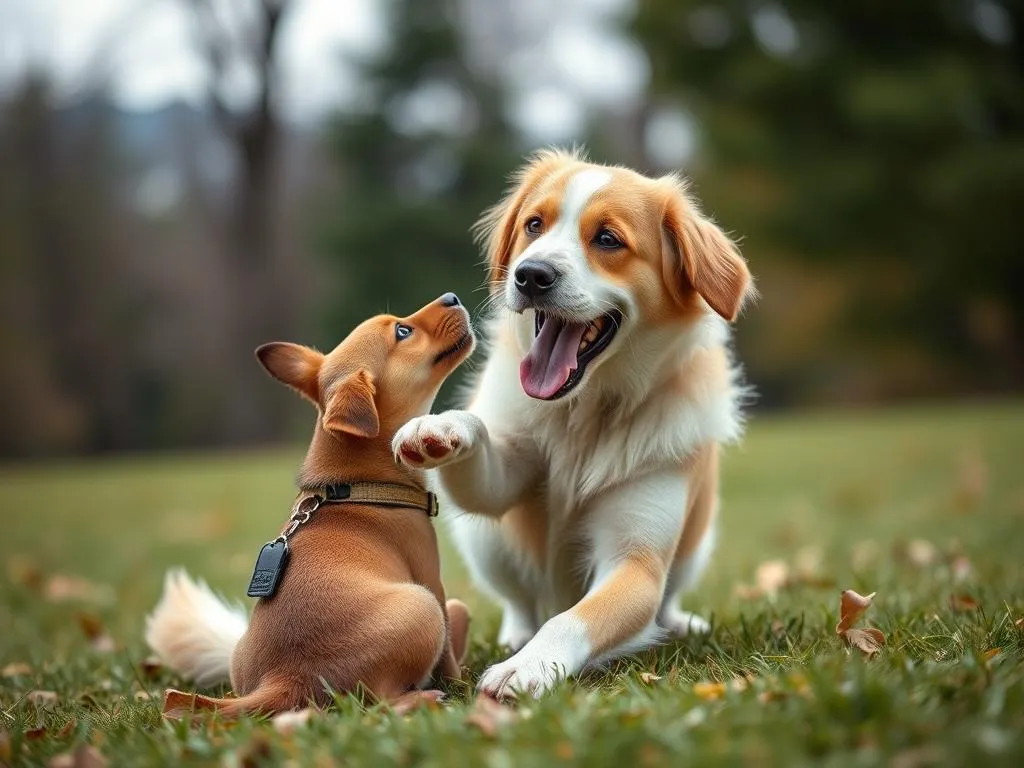
Introduction
Training your dog is one of the most rewarding experiences you can have as a pet owner. Not only does it strengthen the bond between you and your furry friend, but it also provides essential mental stimulation that can lead to a happier and healthier life for your dog. Learning how to teach dog tricks is a fantastic way to engage your dog, enhance obedience, and create lasting memories together.
In this article, we will explore effective methods for teaching your dog tricks, from understanding their learning styles to maintaining motivation during training sessions. We will guide you through a comprehensive step-by-step process to ensure that both you and your dog can enjoy the training experience.
Understanding Your Dog’s Learning Style
Canine Learning Theories
Before diving into the practical aspects of teaching tricks, it’s critical to understand how dogs learn. The two primary learning theories that apply to dog training are classical conditioning and operant conditioning.
-
Classical Conditioning involves associating a neutral stimulus with a positive outcome, which was famously demonstrated by Ivan Pavlov’s experiments with dogs. For instance, if you ring a bell every time you feed your dog, they will eventually associate the sound of the bell with mealtime.
-
Operant Conditioning focuses on modifying behavior through rewards and consequences. This is where positive reinforcement comes into play. When your dog performs the desired behavior and is rewarded, they are more likely to repeat that action in the future.
Different Temperaments
Every dog is unique, and understanding your dog’s temperament is crucial when teaching them tricks. Different breeds exhibit varying learning capabilities. For example, working breeds like Border Collies are often quicker learners than more independent breeds like Basenjis.
Additionally, age and personality play significant roles in training. Puppies are generally more eager to learn and explore, while adult dogs may take a bit longer to adapt to new commands. Patience and understanding are vital when tailoring your training approach to your dog’s specific needs.
Preparing for Training
Setting the Right Environment
Creating a conducive environment for training is essential. Choose a quiet, distraction-free space where your dog can focus solely on the task at hand. This could be a room in your house or a secluded outdoor area. Consistency is key, so try to train in the same location each time to help your dog associate that space with learning.
Essential Training Tools
To effectively teach your dog tricks, you’ll need a few essential training tools. Consider these:
- Treats: Small, tasty treats serve as excellent rewards. Choose high-quality options that your dog loves to keep them motivated.
- Clickers: A clicker can help mark desired behaviors precisely. The sound becomes a cue for your dog that they have done something right.
- Toys: Some dogs are motivated by play. Use their favorite toys as rewards during training sessions.
Make sure to select rewards that resonate with your dog’s preferences, as this will enhance their learning experience.
Basic Commands as Foundation
Teaching Basic Commands
Before diving into tricks, it’s essential to teach your dog basic commands. Key commands like “Sit,” “Stay,” “Come,” and “Down” form the foundation for more complex tricks. These commands help establish a framework for communication and obedience.
Building a Strong Foundation
Mastering these basic commands will make teaching tricks significantly easier. If your dog understands the concept of following commands, you can build upon that foundation to introduce more advanced behaviors.
Step-by-Step Guide to Teaching Tricks
Popular Tricks to Teach
Here are some popular tricks you can teach your dog:
- Easy Tricks: Shake, Roll Over, Play Dead
- Intermediate Tricks: Spin, Crawl, Speak
- Advanced Tricks: Jump Through Hoops, Fetch Specific Items
Detailed Training Process for Each Trick
Shake
- Have your dog sit.
- Hold a treat in your hand and let them sniff it.
- Gently lift one of your dog’s paws while saying “Shake.”
- Reward them immediately when they lift their paw.
- Repeat until they start lifting their paw on command.
Common Challenges: Some dogs may resist having their paws lifted. If this happens, try using a treat to entice them to lift their paw naturally.
Roll Over
- Start with your dog in a “Down” position.
- Hold a treat close to their nose, then move it towards their shoulder.
- As they turn to follow the treat, gently encourage them to roll onto their back and then over.
- Reward them as soon as they complete the roll.
Common Challenges: If your dog is hesitant, practice this in a soft area where they feel comfortable.
Play Dead
- Begin with your dog in a “Down” position.
- Gently roll them onto their side while saying “Bang!” or “Play Dead.”
- Reward them for staying in that position for a few seconds.
- Gradually increase the time before giving them the reward.
Common Challenges: Dogs may get up too quickly. If this occurs, reward them for remaining still even for a second and gradually increase the time.
Utilizing Positive Reinforcement
Importance of Rewarding Good Behavior
Positive reinforcement is critical in training. It encourages your dog to repeat desired behaviors. Timing is essential—reward your dog immediately after they perform the trick to create a strong association between the behavior and the reward.
Alternatives to Treats
While treats are effective, there are other ways to reward your dog. Praise, toys, and playtime can also serve as excellent motivators. As your dog becomes more proficient, you can start transitioning from treats to verbal praise, reinforcing the bond you share.
Maintaining Engagement and Motivation
Keeping Training Sessions Fun
To keep your dog engaged, keep training sessions short and enjoyable. Aim for 5-10 minute sessions a few times a day, incorporating play into the process. This will ensure that your dog remains excited about learning new tricks.
Recognizing When to Take Breaks
Watch for signs that your dog is losing interest, such as wandering off or becoming distracted. If you notice these behaviors, it may be time to take a break. A well-timed break can help re-energize your dog for the next training session.
Common Mistakes to Avoid
Frequent Pitfalls in Dog Training
One common mistake owners make is overusing commands. Repeatedly asking for the same trick can lead to frustration for both parties. Instead, be patient and allow your dog time to understand what you are asking.
Misinterpreting Dog Behavior
Understanding your dog’s body language is crucial for effective training. Signs of stress or discomfort, such as yawning or panting, may indicate that your dog needs a break. Being attuned to these signals can greatly enhance the training experience.
Advanced Training Techniques
Using Lure and Reward Techniques
Luring is a highly effective training technique that involves guiding your dog into the desired position using treats. This method can be particularly useful for tricks that require specific body movements.
Incorporating Clicker Training
Clicker training is another excellent tool for teaching tricks. The sound of the clicker marks the exact moment your dog performs the desired behavior. This method helps improve communication and can lead to faster learning for your dog.
Building a Lifelong Learning Relationship
Continuing Education for Dogs
Training doesn’t stop once your dog learns a few tricks. Ongoing education is essential for keeping your dog mentally stimulated. Regularly introducing new tricks and skills will keep both you and your dog engaged.
Bonding Through Training
Training provides a unique opportunity to bond with your dog. The shared experiences and successes create a deeper connection, fostering trust and understanding between you both.
Conclusion
In conclusion, teaching your dog tricks can be an incredibly fulfilling journey that enhances your relationship while providing essential mental stimulation for your pet. By understanding your dog’s learning style, preparing adequately, and using positive reinforcement, you can effectively teach a variety of tricks, from simple to advanced.
So why wait? Start your training adventure today, and enjoy the countless benefits that come from learning how to teach dog tricks!









